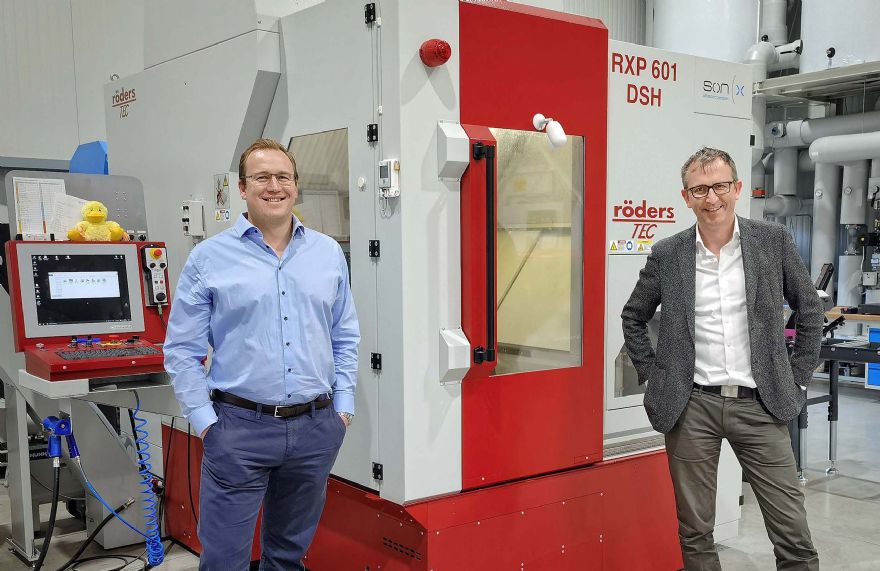
In the production of many optical components such as lenses and mirrors, the specified form accuracy and surface roughness are generally an order of magnitude higher than for most other machining processes. That is why
Son-x GmbH in Aachen, Germany, a spin-off from the
Fraunhofer Institute for Production Technology, uses a five-axis machining centre built in Soltau by another German firm, Roeders. The machine tool manufacturer’s full range of machines are available in the UK and Ireland through High Wycombe-based sole agents
Hurco Europe Ltd.
Son-x manufactures metal components made from various alloys, including high-strength steels, as well as parts made of clear plastic. Quantities range from single pieces to several hundreds per year, while dimensions extend from a few millimetres up to 0.5m diameter, for example in the case of metal mirrors. Sectors that use the components produced include optics, laser, sensor, astronomy and research. Additionally, moulds are machined for producing lighting systems used in the automotive industry.
Dr-Ing Olaf Dambon, a director of Son-x said: “Our early work involved ultra-high-precision diamond turning, but parts started coming along that needed a prismatic machining platform able to achieve similar accuracies. We drew up a specification sheet for the machine we wanted and designed a challenging test part to ask prospective suppliers to produce. Five machining centre manufacturers were shortlisted, including three from Japan, but we chose the Roeders because its trial machining results were the best.”
High precision requirementsAn order was therefore placed for a Roeders RXP 601 DSH five-axis machining centre, which was delivered in October 2018. Dr-Ing Benjamin Bulla, a fellow director of Son-x, said: “In view of our high precision requirements, machine rigidity, smooth running and thermal stability were high on the list of priorities.
“The Roeders machine appears rather large at first glance for the size of work we undertake. However it was precisely this mass, as well as the measures taken by the manufacturer to ensure high-precision machining, that meant it was the right choice for us.”
He explained that milling complex optical arrays with hundreds of tiny cavities for lenses sometimes takes more than 50hr. Throughout this time, the machine’s reference point must remain extremely stable to ensure the exact alignment of each lens. The RXP 601 DSH achieves this, he says, due to its linear direct drives, high-precision linear guideways with frictionless weight compensation in the Z axis, and high accuracy optical scales.

With its Racecut functionality, the Roeders control system compares the actual and target positions in all axes 32,000 times every sec, compensating for even the most minimal path deviations as they occur. Exceptional thermal stability is provided by a medium, temperature controlled to ±0.02°C, circulating through all important components of the machine. The temperature of the production environment is also kept stable by an air conditioning system.
The machine is equipped with a Levicron air bearing spindle capable of rotational speeds up to 60,000rev/min. Thanks to its smooth running and good damping characteristics, it ensures the production of top quality surfaces in all materials. As this eliminates the need for manual reworking, it also prevents the consequent, often unavoidable distortion of the surface and geometry of the component.
Dr Bulla concluded: “We have many jobs that run for extended periods, so the long-term stability of the machine's reference point is crucial. In one instance we had to mill moulds for arrays of hundreds of plastic lenses whose shape had to be controlled to within 316nm. This tolerance was reliably maintained throughout 50hr of machining, even for the last lens in the array. We are highly satisfied with the results.”